List of Authors
>>About this blog
Recent blog post
|
[Hanes]
Nov. 29, 2018 12:00
Hello. This is a new correspondent, Hanes. 
The other day, while walking around the town, I happened to discover a wonderful cafe just opened on November 12!
The cafe is CO-SIDE CAFE@TSUKIJI SANOKIYA, located near Minami Takahashi.
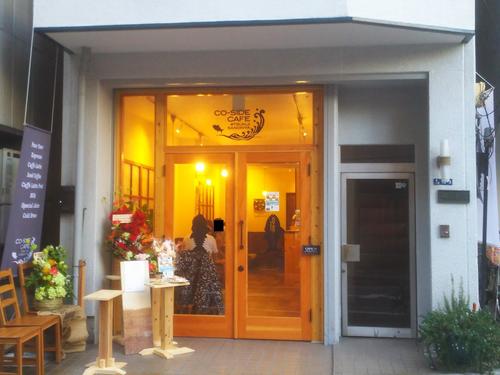
It's just opened, so the inside of the store is very beautiful.
And it is a fashionable and calm space where you can feel the warmth of wood.
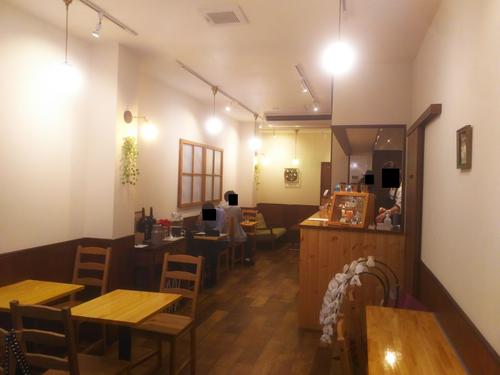
At this shop, senior correspondent Asunaro and I Hanes have introduced it in the past.
You can also enjoy Tsukiji's popular sweets, Tsukiji Sanokiya's "Tunayaki".
And nicely, there is another gourmet that represents Tsukiji on the menu.
These are the collaboration products "Atsushi Yaki Tamako Sand" (300 yen) and "Cube Atsuyaki Tamako" (250 yen) with Marutake Tsukiji.
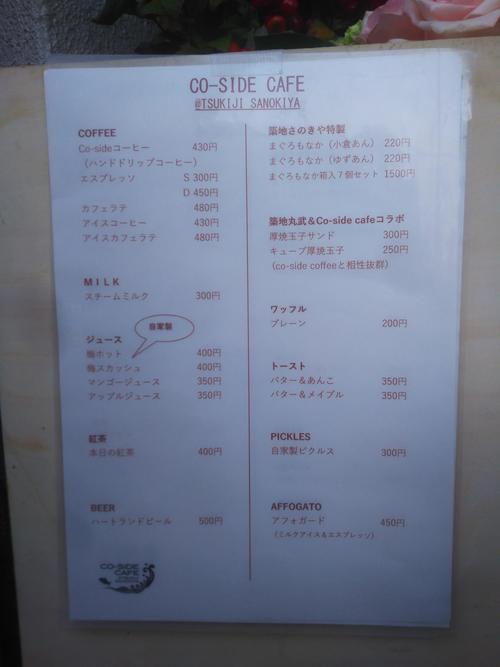
This time, Marutake Tsukiji's Atsushi Yakitamako, who always gave up buying just by looking at the line, was there.
We had "Atsushi Yakitamako Sand" which was luxuriously packed.
Eat a bite and be impressed by the juicyness of Atsushi Yakitamako!
Slightly gentle spiciness (like mustard) matches the sweet Atsushi Yakitamako.
It's very easy to eat and has a sandwich that you won't get tired of.
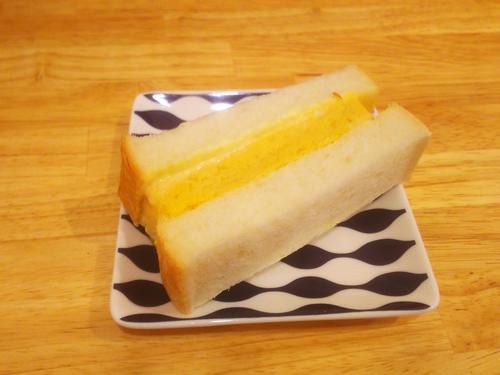
There are plenty of drink menus, so if you come near you, enjoy Tsukiji's popular gourmet and coffee together.
Why don't you relax here?
■CO-SIDE CAFE @TSUKIJI SANOKIYA
Address: 1-13-3, Minato, Chuo-ku, Tokyo
Provisional business hours: From 8:00 to 18:00
Regular holidays: Day, celebration
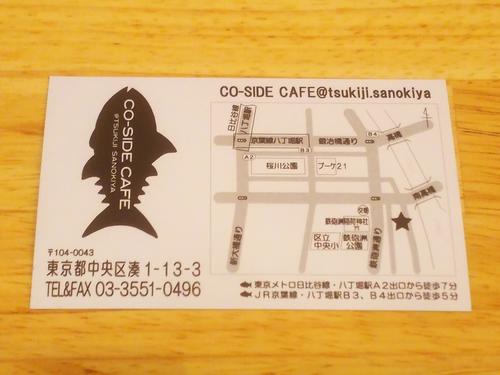
※This article has been approved by CO-SIDE CAFE@TSUKIJI SANOKIYA.
[Hanes]
Nov. 28, 2018 18:00
Hello. This is a new correspondent, Hanes.   The other day, during the lunch break on a business trip to Osaka, I rushed to a place related to Chuo-ku.  That's Tsukuda in Nishiyodogawa-ku, Osaka!
I guess there are many readers who heard Tsukuda? That's right. Tsukuda in Osaka is related to Tsukuda Island in Chuo-ku.  Tsukuda Island in Chuo-ku was reclaimed by fishermen who entered Edo from Tsukuda-mura, Nishinari-gun, Settsu-kuni (currently Nishiyodogawa-ku, Osaka-shi), and was formed in the first year of Shobo (1644). So why was it built by fishermen in the distant Settsu country? The reason for this was on a little edge. In Tensho 14 (1586), Ieyasu Tokugawa visited Osaka Sumiyoshi Taisha Shrine and Settsu Tada Shrine. At that time, it was the fishermen of the main character Tsukuda who served as the ferry of Kanzakigawa.  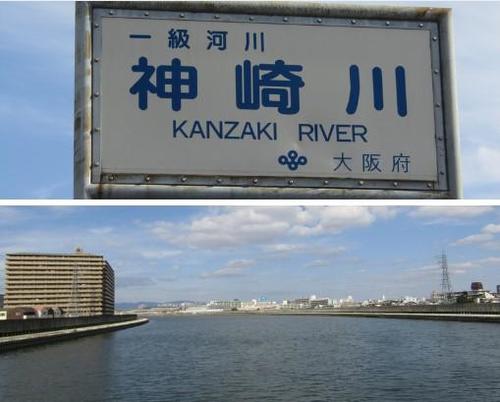 (On the left side is Tsukuda) In Keicho 17 (1612), they were ordered by the Shoguns to serve as fish offerings, and 33 fishermen from Tsukuda and Owada, including the younger brother of Miyaji Tamino Shrine and Magoemon Mori of Tsukuda Village, entered Edo. They were given the privilege of fishing rights, such as being able to fish in any sea in Japan and being exempt from tax. Initially, they lived in Nihonbashikoamicho and engaged in fishing in Edo Bay. Reclaimed the land of the gunshot, which was later received from the Shogunate, and created it. It was named "Tsukuda Island" after his hometown and moved to Japan.  Later, the remaining fish donated to the Shogunate were arranged on board boats and sold to the general public. It was the beginning of the Nihonbashi Fish Bank that I introduced the other day. 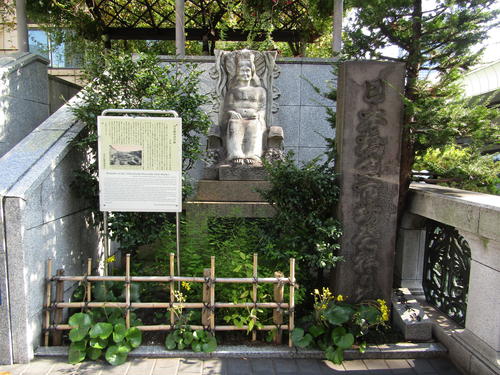 The shrine is located in Tsukuda, Osaka, which enshrines the Ogami of Sumiyoshi. 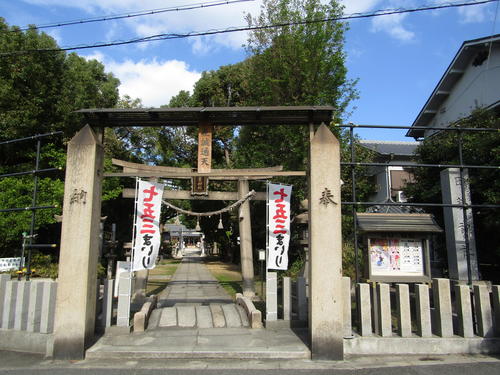 There is a monument about fishermen who have greatly contributed to the development of Chuo-ku.   On the grounds, there is also Toshogu Shrine, which was enshrined after Ieyasu's death, indicating the special connection between Tsukuda and the Shogun's family.  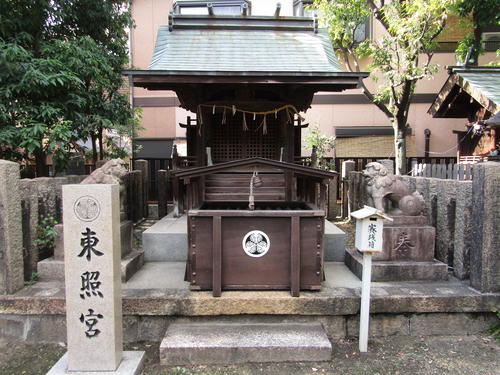 And the grave of Magoemon Mori, a representative of fishermen, is located at Masayuki-ji Temple near the shrine. According to the temple, there is the intention of descendants, and it is not currently open to the public due to preservation.  However, at Tsukiji Honganji Temple in Chuo-ku, you can see Magoemon Mori Peace pagoda.  This was built in 1861, his 200th anniversary. 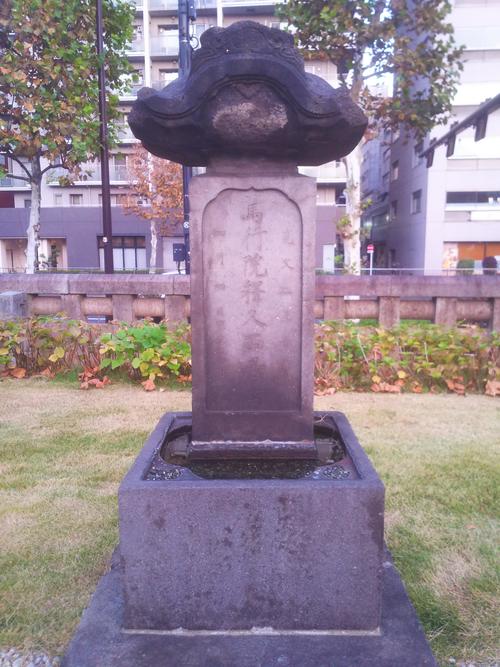 The right side is the relationship between the fishermen of Tsukuda Island and the Tokugawa family, and the left side is engraved with the formation of Tsukuda Island. 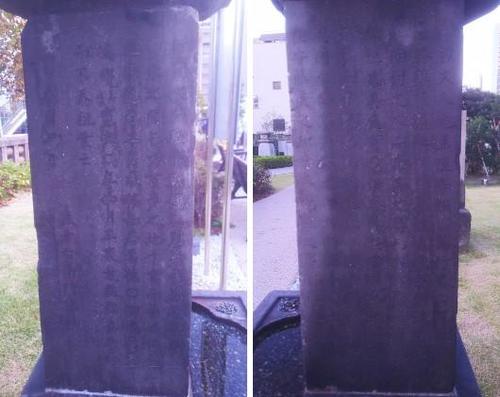 (Right: right side, left: left side) Finally, candidates for the Chuo-ku Tourism Test will introduce the cultural property related to Tsukuda that they want to check, "White Fish Offering Box" This was used by a fisherman on Tsukuda Island to offer white fish to the general. An inner box painted in red (the lid is written with gold mud as "Gozen white fish box Tsukudashima") It is said that it was placed in a black lacquered sandwich box (which is written in vermilion lacquer as "Gozen Gohonmaru") and transported through a katsugi stick.  Goyo fishing was carried out from November to March every year using the net fishing method, a type of fixed net. You can also see it in the Edo Famous Zoukai. When you spotlight the fishermen in this way, can you naturally see their lives? Fishermen who moved to Edo with a mysterious connection from Tsukuda, Settsu country. The edges that they connected were not only the edges of the Shoguns, but also the edges of Edo and Settsu.  Even today, students from Tsukudajima Elementary School in Chuo Ward and Tsukuda Elementary School in Osaka City interact with each other. There is still a good relationship on the island connected by fishermen.  [Reference Materials] Osaka Asobo (Osaka Asobo) "Walking in the land related to Chibune Station (Hanshin Main Line) Tsukuda fishermen"[Site useful for measures against cultural properties in tourism certification] Chuo-ku “Chuo-ku Cultural Properties” http://www.city.chuo.lg.jp/smph/kusei/syokai/tyuobunkazai/(A more detailed book version can be borrowed from the library in the city  .) [Aside] During the Edo period, Tsukuda Island, which separated the sea slightly from the city, was an attractive place for people in the city. Fujimimono, Sumiyoshi-jinja Shirine Festival and clam digging seemed to have become tourist attractions. The situation is depicted in "Edo specialty Kago" and "Picture Book Edo Souvenir".
[Hanes]
Nov. 24, 2018 09:00
Hello. This is a new correspondent, Hanes. 
Following the company meal of the Tokyo Metropolitan Expressway Co., Ltd. Shintomi Branch, which was introduced the other day, the Tokyo Metropolitan Expressway Co., Ltd.
This time, we will deliver it from the 1st floor grill of Chuo-ku government office.
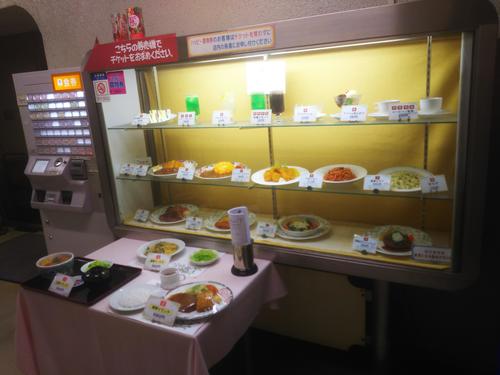
This is not a staff cafeteria, but it has relatively long business hours.
It is a space where those who come to the ward office or library can easily eat from morning to evening.
In addition, you can have pasta that will probably not be offered at the 11th floor staff cafeteria!
That's why I bought a weekly pasta meal ticket and went to the store.
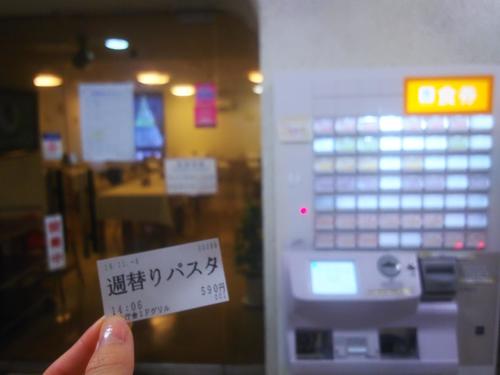
It's not a self-service for staff, so the order is a restaurant style!
I sit in my favorite seat and give the waiter a meal ticket.
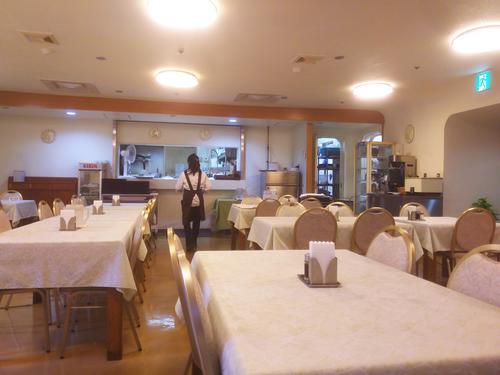
A few minutes to wait while looking out from the window...The ordered asparagus and bacon peperoncino were brought.
It's nice to be able to eat vegetables in salads and to have your favorite amount of Parmesan cheese.
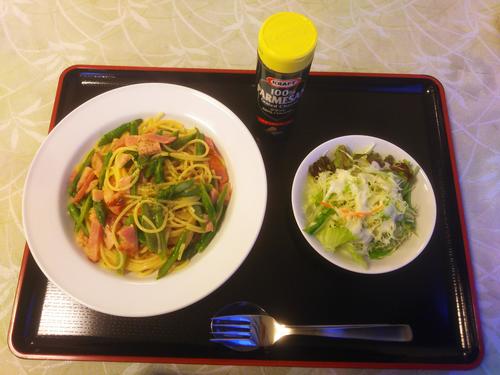
And above all, the noodles that were more sticky than expected, and the asparagus and thick bacon that were generously entered.
It was a quality that overturned the concept of rice at the government office in a good way.
Perhaps because it was past noon, it was not too crowded and I was able to relax.
In addition to firm rice, from sandwiches that can be picked up when you are hungry.
We also have desserts that can be eaten by children!
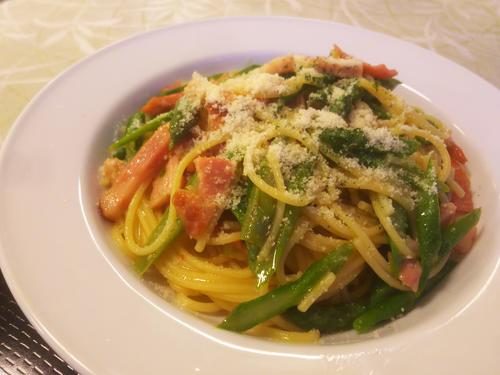
Lunch that you can enjoy at a reasonable price in Tokyo is very valuable!
If you are near you, lunch at the government office....How about it?
As an aside, this is the November menu of the staff cafeteria on the 11th floor.
Calorie and salt are detailed in detail, and from a sticky value lunch
Information that is good for those who care about health, up to healthy lunch with a total calorie of 650kcal or less, using 100g or more vegetables, and a salt content of 3.0g or less.
In addition, there is a menu with plenty of vegetables using more than 120g of vegetables, and a low-salt menu with no miso soup and a salt content of less than 2.5g.

There are a lot of menus, so it's easy to see!
The staff cafeteria will be reported here when you use it, so please wait for a while.
■Chuo-ku government office 1F grill
Address: 1-1-1, Tsukiji, Chuo-ku, Tokyo
Business hours 10:00~17:00
Lunch: 11:15~14:30
Limited menu: 14:30~16:00
Cafe: 10:00~16:40
※This article has been approved by the person in charge of the grill operating company and the person in charge of the general affairs department of Chuo-ku government office.
[Hanes]
Nov. 22, 2018 18:00
Hello. This is a new correspondent, Hanes. 
In the previous excursion series, we focused on bricks in Fukaya City and discussed the relationship with Chuo-ku.
At that time, the key person was Eiichi Shibusawa, the father of the modern Japanese economy.
This time, I would like to introduce my relationship with Chuo-ku while picking up a part of his life.
■The Life of Eiichi Shibusawa: From the son of an Australian farmer
Eiichi Shibusawa was born in 1840 on the current Chiaraijima, Fukaya City.
The "Nakanakachi" built on his fabric was built in 1895 by Eiichi's sister and wife.
It is open to the public and can be visited.
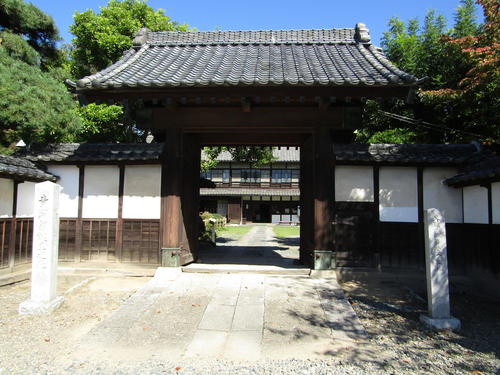
From the age of seven, he studied thesis and other disciplines from his cousin, Juntada Odaka, and was influenced by the idea of rejection of the king.
At the age of 17, he planned to take over Takasaki Castle and burn out Yokohama Ijinkan with his cousins, but canceled it.
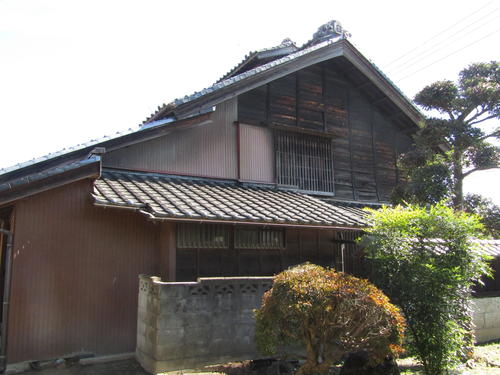
(It is said that the plan was made on the second floor of the Odaka Jun Tada's birthplace in this photo.)
At the age of 24, he questioned the Tokugawa Shogunate system and participated in the Imperial Religion Movement.
He began serving the Hitotsubashi family and the Shogunate, one of the three lords (the highest family after the Shogun's family and the Gosan family).
In 1867, he accompanied the famous Akitake Tokugawa of the 15th Shogun Yoshinobu Tokugawa to the Paris Expo.
See and witness European advanced ideas, culture, and society that overturn the king's rejection of the king.
After returning to Japan, he served the Ministry of Finance of the Meiji New Government with the persuasion of Shigenobu Okuma.
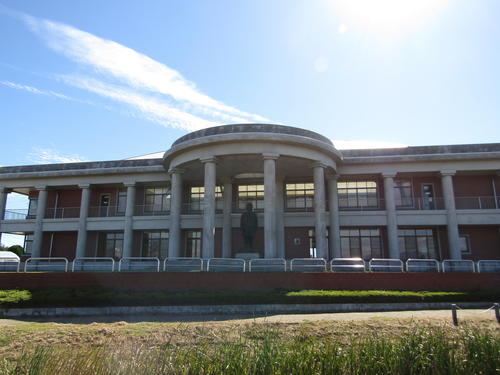
(The memorial hall and the statue of Eiichi Shibusawa taken at the Eiichi Shibusawa Memorial Hall)
After resigned with Toshimichi Okubo and his colleagues in financial management, he reigned as the highest leader in the business industry.
Since then, he has been involved in more than 600 welfare services and contributed to international goodwill.
■Relationship with Chuo-ku
He is also committed to the establishment of a number of companies and universities, and as a representative contribution in the ward, he is also involved in the establishment of numerous companies and universities.
He served as General Director of the First National Bank and the first Director of St. Luke's International Hospital.
And there were several his mansions in Tokyo, but they were also in Nihonbashikabutocho.
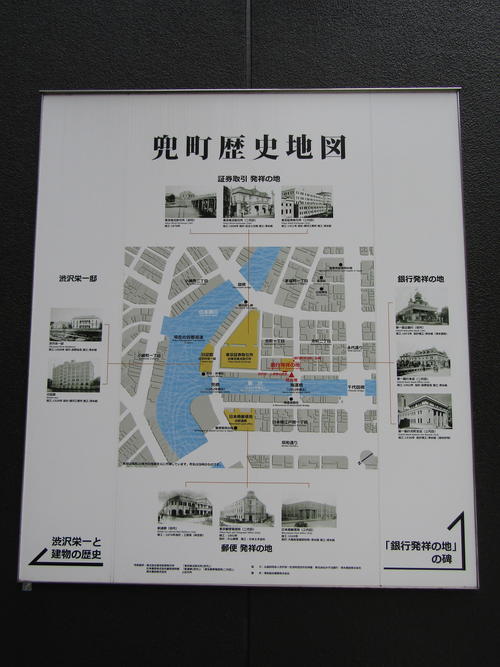
The former site is now the Nisshokan (which faces the Nihonbashi River next to the Tokyo Stock Exchange).
This building has a beautiful classical-style three-layer structure and arch windows.
The Company has earned a gold rating in the real estate valuation of the Japan Policy Bank.
It is one of the buildings that convey the remnants of the time when securities companies with a solid appearance line up.
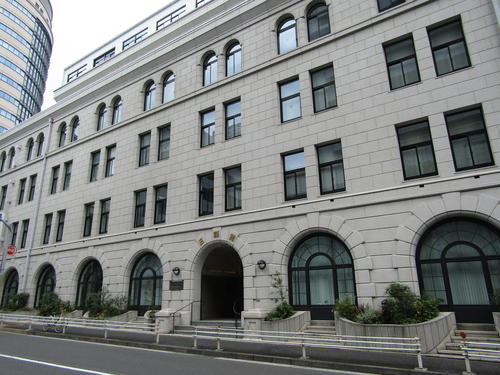
In this way, there is surprisingly a place related to Eiichi Shibusawa in Chuo-ku.
It's not always visible, though
It may be interesting to walk around the town on the theme of a person who left a name in history.
※About photograph of cultural assets of Fukaya-shi included in this article, we have received publication permission from person in charge of Fukaya-shi culture promotion section.
[Hanes]
Nov. 20, 2018 12:00
Hello. This is a new correspondent, Hanes. 
Until now, we have introduced Chuo-ku from various viewpoints, such as the morning activity series and excursion series, but a new series will be added from this time!
Under the title of "From the company window in Chuo-ku", we will introduce corporate food that can be enjoyed mainly by the general public in Chuo-ku.
The first memorable event will be featured in the Tokyo Metropolitan Expressway Co., Ltd. Shintomi Branch Office!
It is located in the middle of Takaracho Station and Hatchobori Station.
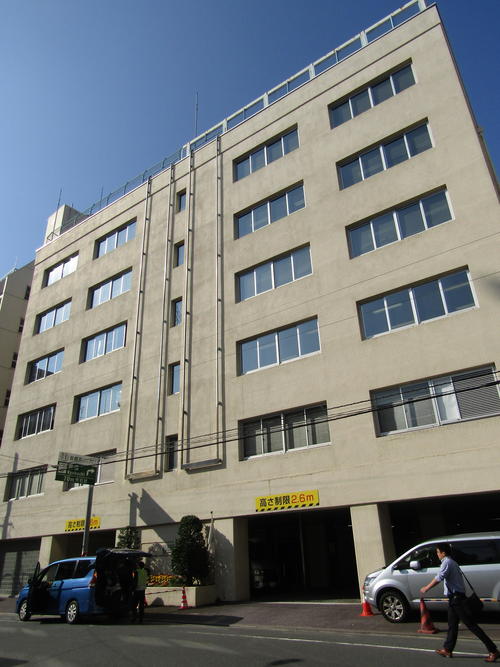
If you know that you can eat company food here because it doesn't face the main street
I think it's really a few, including those who live in the neighborhood.
Lunch information is available outside the building, so you can check the menu.
It's mainly Japanese food, and it's a lineup that relaxes you to think about the taste of home.
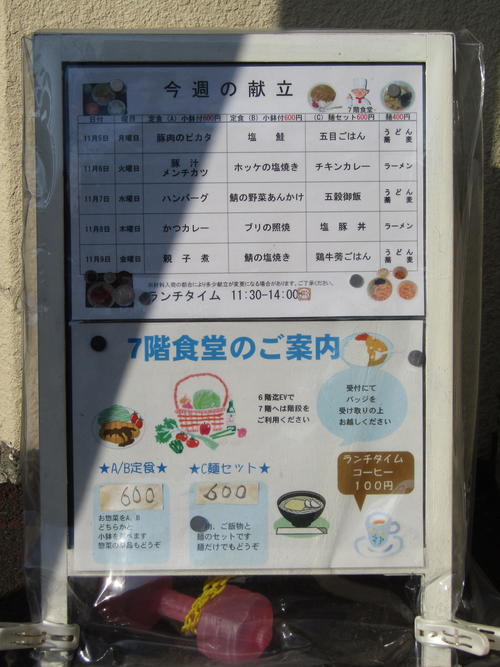
As you can see in the guide, tell us that you will use the cafeteria at the reception and receive a badge.
Take the elevator to the 6th floor and head to the 7th floor restaurant "Bufe" by stairs.
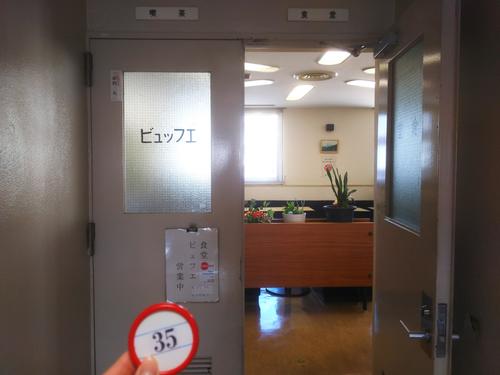
There are people who cook in the back, and welcome you very easily as if you had come to your favorite set meal shop.
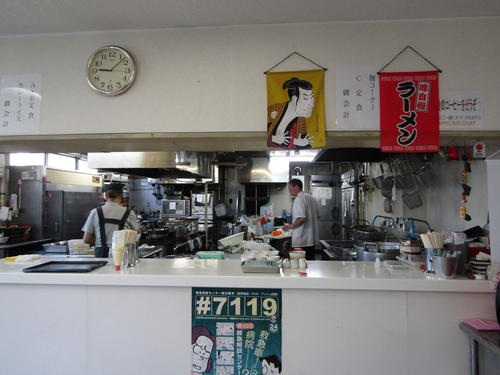
The inside of the cafeteria has a government office style that can be said to be "This is a company food!"
Being able to check the morning information program on TV is also a nice point for those who work for the company.
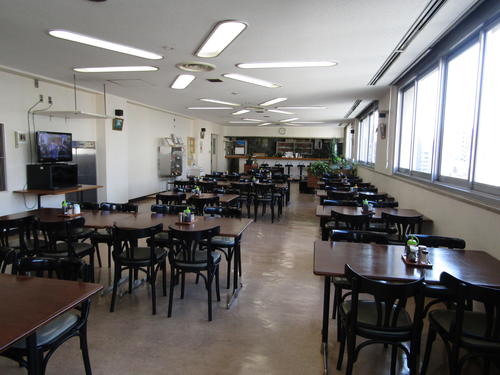
And this time, I would like to introduce a breakfast set that is not included in the outside guide.
This is limited from 8:00 to 10:30, and it is a set known to those who know it.
It's a very normal menu, but it's only 350 yen.
Don't you think the service is incredibly good in Tokyo?
(If you are not good at natto, you can also choose seaweed instead.)
And most of all, handmade in the kitchen is attractive.
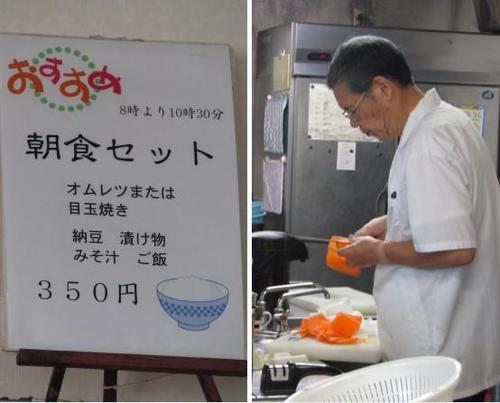
Here's the breakfast set I ordered (the fried egg, natto).
I betrayed my expectations in a good way, and there are two fried eggs that came out!
It's a great surprise for those who want to eat well in the morning.
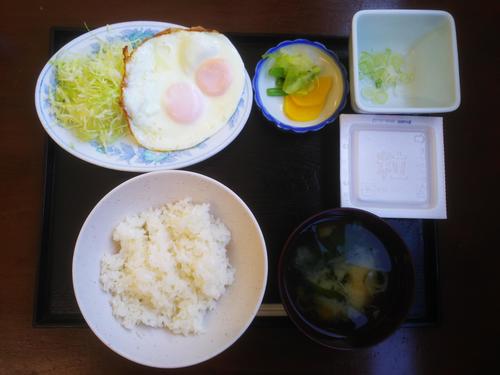
But that's not the only surprise!
A cup that has been warmed in advance with a cup warmer.
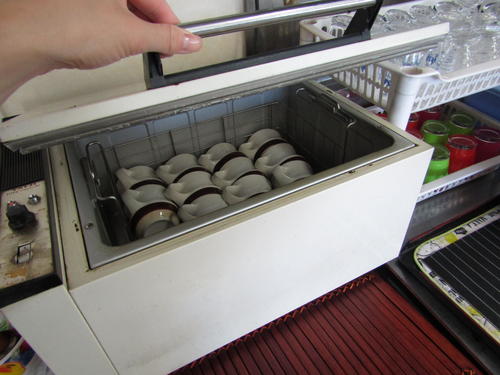
I'll have some coffee.
The cup is hot, so it is recommended for the coming season!
This is a free service only for breakfast, and it costs 100 yen at lunchtime.
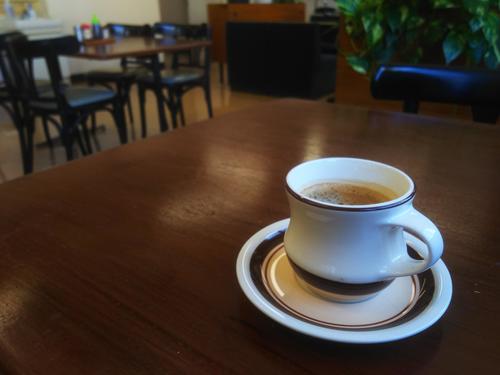
At the end of the window glass, where I moved my line of sight with a slow cup of coffee.
The Metropolitan Expressway (Tokyo Metropolitan Expressway) stretched between high buildings.
I don't think there are many places where you can see the Metropolitan Expressway while eating and drinking indoors.
It seems that there are many employees and neighbors here.
Neighboring workers, those who use the room without meals Plan (no breakfast) at a nearby hotel.
Children who like cars can enjoy rice and scenery.
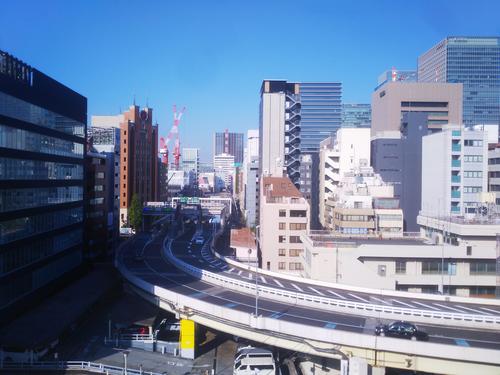
It's reasonable and more than expected!
Why don't you try such a secret place company meal in Chuo-ku once?
■Tokyo Metropolitan Expressway Co., Ltd. Shintomi Branch
Address: 1-1-3, Shintomi, Chuo-ku, Tokyo 7th floor
Business hours Breakfast 8:00-10:30/Lunch 11:30-14:00
※This article has been approved by the cafeteria.
※When using company food, please follow the manners, such as not taking pictures of the company (outside the cafeteria) unnecessarily or not entering places where entry is prohibited.
[Hanes]
Nov. 19, 2018 12:00
Hello. This is a new correspondent, Hanes. 
Last month, senior correspondent Ino-chan introduced in "Slightly New York Times-Walking around a town to enjoy with a public bath-" that October 10 was a public bath day.
That October 10th...In Meiji 15 (1882), there was an event that remained in Japanese history.
That is the start of the Bank's business.
In Nihonbashihakozakicho, there is a monument indicating the place where the Bank of Japan was founded, and it is engraved as follows.
October 10, 1882 The Bank of Japan opened its business here.
April 1896 Relocated to the current location of Nihonbashi Honishi-cho
We will build this monument to commemorate the 100th anniversary of our founding.
October, 1982
Haruo Maekawa, President of the Bank of Japan
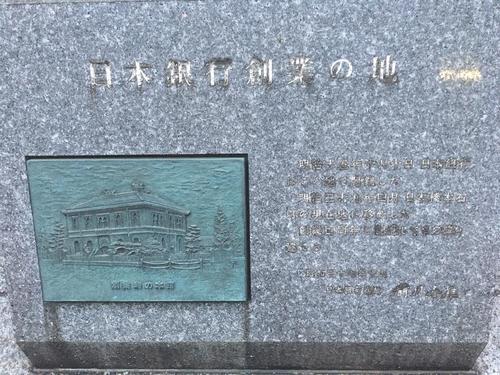
At that time, the Bank of Japan recorded that it was a fine brick building.
Even though I knew it, "Where did the brick come from?...I wondered.
I went to a place that would solve it a while ago.
That's the place where this station is!
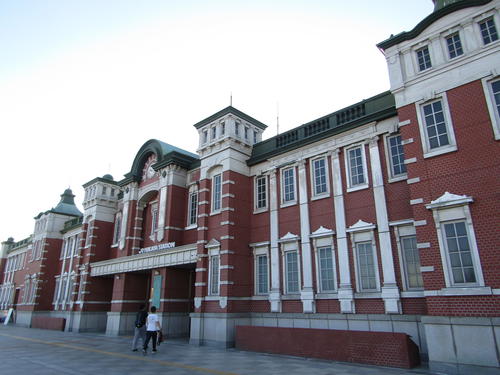
At first glance it looks like the Marunouchi side of Tokyo Station, but it's actually Fukaya Station in Fukaya City, Saitama Prefecture.
Speaking of Fukaya City, the image of Fukaya Negishi and cute loose characters may be strong, but
In the past, it was also famous as a brick production site.
It is said that the Bank of Japan at the time of its establishment was also made of bricks manufactured by Nippon Brick Manufacturing Co., Ltd. in Fukaya City.
Back in 1886, the Meiji government aimed to counter the European and American powers.
Since the launch of the “Government Concentration Plan” with the area around Hibiya as a government district based on modern architecture, the company has launched the “Government Concentration Plan”
A large amount of bricks were needed to make the building a Western-style brick building.
At that time, Eiichi Shibusawa recommended Kamishikimen Village near his parents' home to the factory construction site for the following two reasons.
①Good quality clay that is perfect for making bricks.
(In the past, it was a place where tile production was thriving.)
②I could expect a boat trip.
(You can be transported to Tokyo via the route called Koyama River → Tone River → Edogawa → Sumida River.)
I visited the old brick manufacturing facility, which is the brick manufacturing site of the Bank of Japan, which is open to the public.
At the old office (Brick Archives) in the back, there were many kiln dioramas and bricks at the time.
Invoices for bricks for the Central Station (currently Tokyo Station) (August 21, 1907 / deliver 8,332,000 structural bricks from here) etc.
I went after showing all the interesting materials.
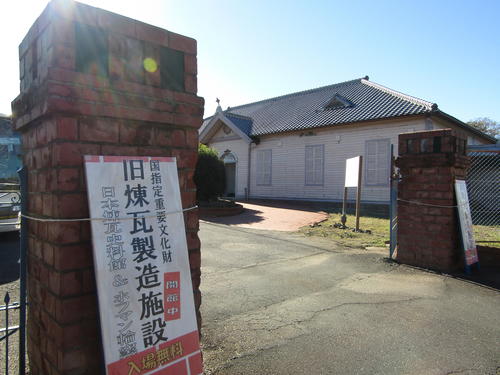
Hoffman Ring Kiln No. 6 Kiln, designated as a National Important Cultural Property!
This Hoffman ring kiln is a very valuable cultural property that only four kilns remain nationwide, including this one.
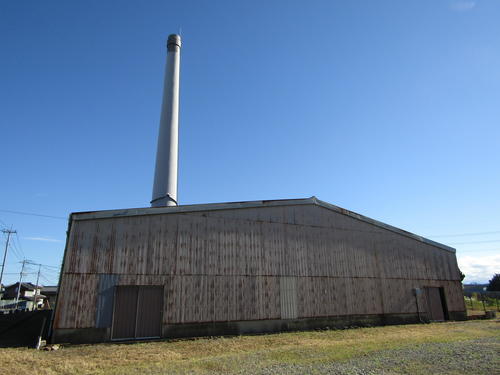
I was guided by a guide and put on a helmet into the kiln.

As you can see from this picture, the wall is very thick.
The reason is to prevent heat from escaping when baking bricks.
It's surprising because it's 3m thick!

The interior was like this, and there were 18 divisions.
There were 36 holes in one break, and it seems that coal was thrown from the second floor through that hole.
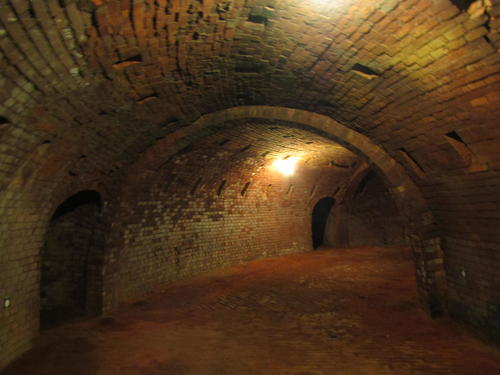
It took two weeks to bake the brick, and it seems that the baking was confirmed with wire from the second floor.
Here, in addition to the Bank of Japan, the bricks used in Tokyo Station Marunouchi Honya and the former Higashimiya Imperial Palace (currently the Guest House Akasaka Palace) were manufactured.
It seems that you are seeing the shadows behind the physically supporting Japan, which is modernizing, and it is somewhat emotional.
Bricks, but bricks.
The bricks, one of the building materials, also tell us such an interesting story.
Regarding the relationship between Chuo-ku and Fukaya-shi, which has been seen through bricks, we have seen the relationship between Chuo-ku and Fukaya-shi.
It will also be featured in the 8th excursion series.
■Former office (Brick Archives), Hoffman Ring Kiln No. 6 Kiln
Address: 28-10, Joshikimen, Fukaya-shi, Saitama
Opening hours: 9:00-16:00 (final admission: 15:30)
Opening day: Saturdays, Sundays (except New Year's holidays)
Admission fee: Free of charge
Website: Fukaya City Homepage "Old Brick Manufacturing Facility"、Eiichi Shibusawa Digital Museum “Old Brick Manufacturing Facility”
※About photograph inside and outside cultural assets, we have publication permission from person in charge of Fukaya-shi culture promotion section.
|
Links
|
![]()
![]()

![]()

![]()
![]()

![]()
![]()







































